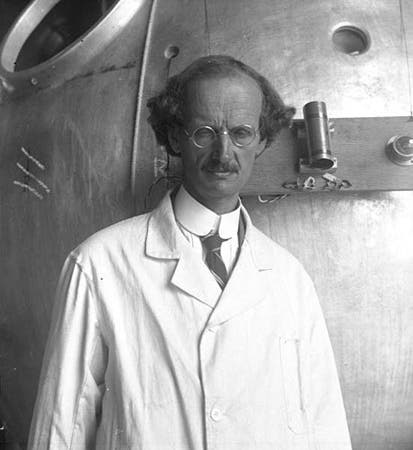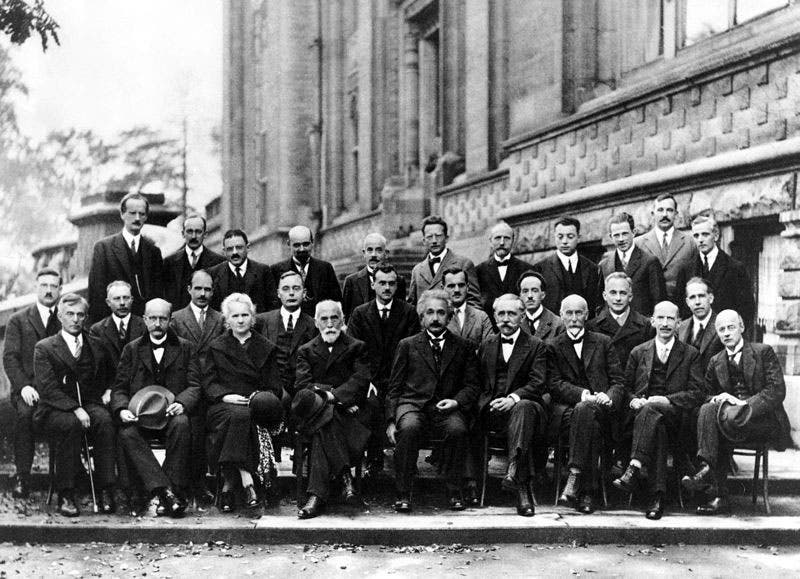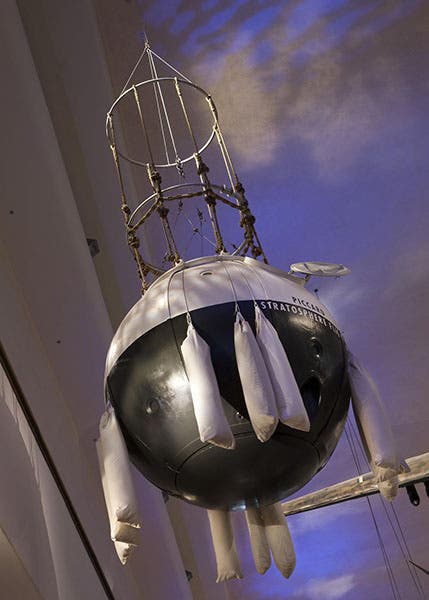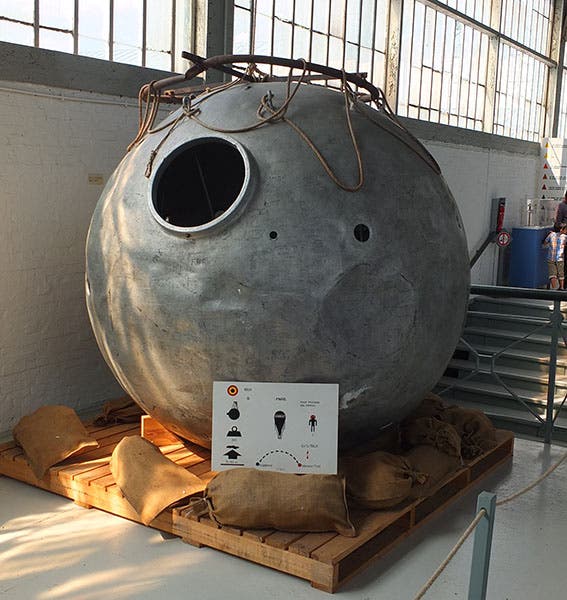Scientist of the Day - Auguste Piccard
Auguste Piccard, a Swiss physicist and extreme adventurer, was born Jan. 28, 1884. Picard was by all accounts an excellent physicist, and he was invited to attend the 1927 Solvay conference in Brussels, which was a milestone event in the history of quantum physics. The official photograph captures Einstein, Madame Curie, Werner Heisenberg, Wolfgang Pauli, Max Planck, Niels Bohr, and quite a few others. Among the remainder, at the far left in the very back row, is a tall, quiet-looking gentleman with an extremely long neck. That is Piccard.
In 1930, Picard took his career in a different direction, when he decided to attempt to ascend into the stratosphere in a high-altitude balloon of his own design. With the help of the Fonds National de la Recherche Scientifique in Brussels, he constructed such a balloon. It was 99 feet across, partially filled with hydrogen gas, and carrying two occupants enclosed in a spherical pressurized aluminum gondola almost 7 feet across. It was called, after its sponsor, the FNRS-1. Piccard, with partner Paul Kipfer, made his first ascent on May 27, 1931, and reached an altitude of 15,780 meters (51,772 feet). In doing so, the two men ascended into the stratosphere, the first humans to do so. The stratosphere is the layer above the troposphere – our atmosphere – and is notable for having no upward air movement and for having a constant temperature for a given latitude. FNRS-1 ascended from Augsburg, where the balloon was made, and descended in Austria, where it landed on a glacier. The next summer, Piccard rose to 16,201 meters (53,153 feet), another world's record.
The records did not last long, as balloonists in Russia and the United States soon followed Piccard's lead and built their own balloons. A balloon of Piccard’s design, launched from the Century of Progress exposition in Akron, Ohio, in 1933, achieved a world record height for the U.S., and a year later, the same gondola carried Auguste's twin brother Jean and his wife Jeannette into the stratosphere, making her the first woman to do so. That gondola is on display at the Museum of Science and Industry in Chicago (fourth image). Piccard's gondola for his first two flights can be seen in the Swiss Transport Museum in Lucerne (fifth image).
Piccard wrote a book about his balloon ascents, called Entre terre et ciel (1946), which was translated into English and published as Between Earth and Sky (1950); the Library has both editions. It is quite enjoyable to read, even if Piccard cannot resist instructing the reader about the physics of the troposphere and the stratosphere; he even spends the last part of the book discussing the possibilities of deep-space flight, at a time when the only viable true rocket was the V-2.
Having conquered the air, Picard turned his aspirations toward the deep sea, feeling that a well-designed gondola should work as well in ocean depths as in the stratosphere. He constructed a bathyscaphe, FNRS-2, a project interrupted by the war. His son, Jacques, took a similar vessel, the Trieste, to the bottom of the Marianas Trench in 1956. We have published a post on Jacques, where you can read more about the Piccards and deep-sea diving.
Auguste Piccard was also the inspiration for the character of Professor Calculus in a popular European comic book, The Adventures of Tintin, which first appeared (in French) in 1929. The cartoonist, Hergé, said he saw Piccard in Brussels and was fascinated by Piccard's height and his long neck, although he also said he had to make Professor Calculus a lot shorter or he would not fit into his panels. We show one panel from the strip (last image), with Professor Calculus in his usual green coat and derby, alongside many of his inventions. Few Americans used to be familiar with Tintin, but that changed when Stephen Spielberg's film, The Adventures of Tintin: The Secret of the Unicorn, was released in 2011. Unfortunately for fans of Auguste Piccard/Professor Calculus, he did not appear in the movie, a rare slip-up by film master Spielberg.
Dr. William B. Ashworth, Jr., Consultant for the History of Science, Linda Hall Library and Associate Professor emeritus, Department of History, University of Missouri-Kansas City. Comments or corrections are welcome; please direct to ashworthw@umkc.edu.









![Using an astrolabe to measure the depth of a well, woodcut in Elucidatio fabricae vsusq[ue] astrolabii, by Johannes Stöffler, 1513 (Linda Hall Library)](https://assets-us-01.kc-usercontent.com:443/9dd25524-761a-000d-d79f-86a5086d4774/a998eb50-55d2-4a88-ace2-a50aa5fa86e7/Stoffler%201.jpg?w=210&h=210&auto=format&fit=crop)

